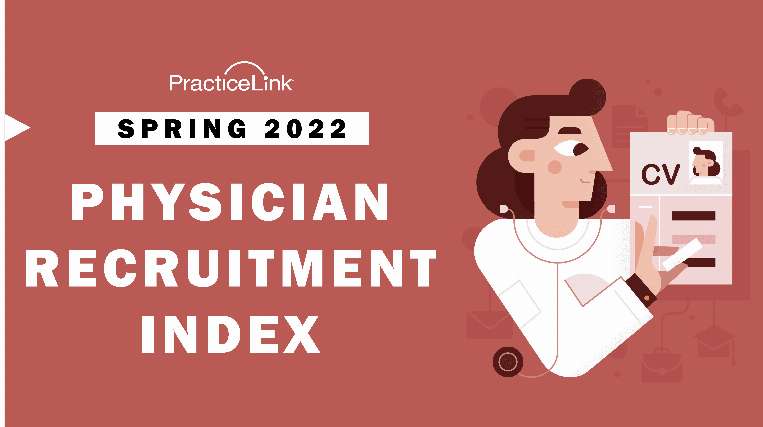Hiring for those hard-to-recruit specialties
 Posted by Drew Terry
Posted by Drew Terry

Not all physicians are alike. The same is true for how you recruit certain specialties.
Some specialties can be harder to fill because many organizations are trying to hire for the same position or because there aren’t enough candidates to fill all the openings.
A look at the current physician job market
Each quarter, PracticeLink publishes two lists to help physician recruiters gauge how to allocate time and energy in their recruitment efforts:


These quarterly indexes are based on the supply and demand of specialty jobs and specialists. The more jobs per candidate in the system, the more difficult recruiters may find the search for those specialties.
Take a look at the lists. Do they match with your experiences in recruiting these positions or others?
How to attract hard-to-recruit candidates
For the hard-to-fill positions you’re recruiting, there may be some additional work to be done to help your offer stand apart from the competition. This starts with making sure your salary is in line with - if not exceeding - expectations and others for that specialty and geographic location.
Next, there are traditional incentives to reconsider. Are you offering adequate or above-average medical benefits, paid leave, short- and long-term disability, retirement and malpractice insurance? Are there any adjustments that could be made to increase the value of your contract?
Studies like Merritt Hawkins’ 2021 Review of Physician and Advanced Practitioner Recruiting Incentives can help you identify areas where your offers are in line with competitors - and opportunities to improve them or make additions.
Of the searches that were part of the 2021 study:
- 61% of physician and advanced practice provider positions’ contracts involved salary plus a bonus (down from 72% the previous year).
- Of those compensation packages with production bonuses, 57% of the bonuses were relative value unit-based (RVUs) and 23% involved metrics of quality care (down from 73% and 64%, respectively). When quality was a factor in the production bonus, it determined about 10% of the total compensation.
- 61% offered a signing bonus (down from 72%). Physician bonuses averaged just under $30,000, while nurse practitioner and physician assistant bonuses averaged about $7,200. These bonuses varied by specialty as well.
- 74% of the searches included a relocation allowance (down from 97%). The average size was about $10,600 for physicians and $8,400 for NPs and PAs.
- 94% included continuing medical education (CME) (down from 96%). Averages were about $3,700 for physicians and $3,000 for NPs and PAs.
As you can see, incentives, signing bonuses, relocation assistance and CME allowances remain commonplace in offers. Merritt Hawkins theorized the drop in quality care-based bonuses may be attributed to the higher number of radiology, anesthesiology and CRNA positions included in the survey vs. the previous year.
Health insurance, malpractice insurance, retirement/401K programs and disability are also virtually standard. Not accounting for these areas could make your opportunity less attractive to candidates with multiple options.
One area the study revealed that may help organizations stand out is student loan forgiveness. According to the review, only 21% of searches included educational forgiveness, a decrease of 3% from the previous year. Of those that did, 70% came with a term of three or more years.
Other ways to help your opportunities stand out
If your organization’s compensation and incentives are competitive, look for more unique perks that show your organization’s commitment to the candidate’s work/life balance and happiness in the role. Some ideas include:
Work schedule
- A flexible schedule that allows time to foster personal interests and tend to family obligations
- Paid volunteer hours so physicians can find additional ways to help people in the community or abroad
- Expanded maternity and paternity leave
Extra expense assistance
- Travel account or company car
- Cellphone and pager reimbursements
- Journal subscriptions
- Recertification and license fees
Community ties
- Gym or club memberships
- Season tickets to sports or cultural events
- Local newspaper subscriptions
Facility enhancements
- Hiring a medical scribe to help with paperwork
- Offering complimentary professional support (like life coaching or counseling)
- Lounge space where physicians and APPs can unwind, network and rest during any downtime

